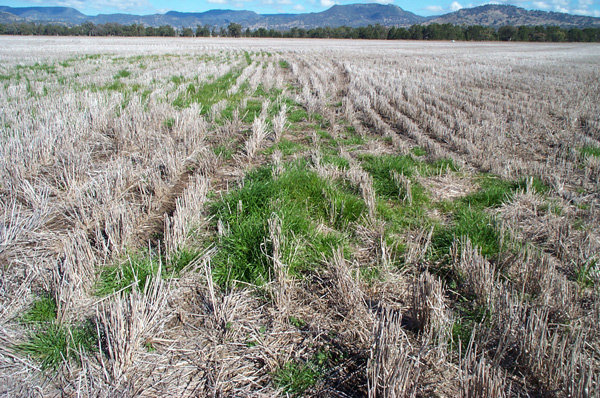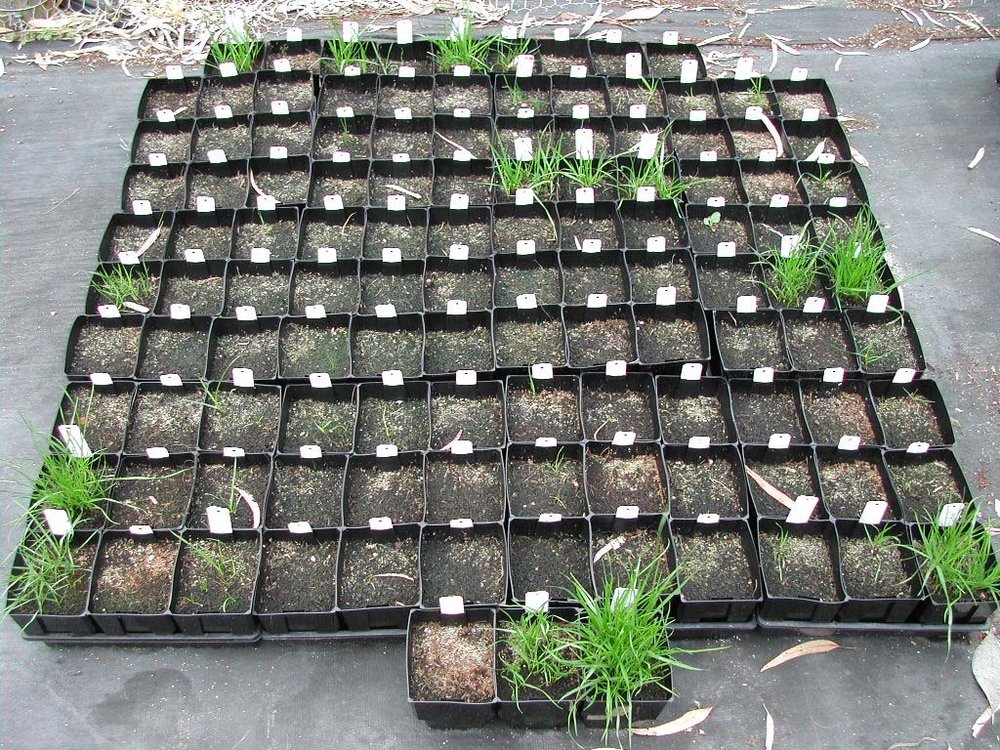Some growers and agronomists feel the results from herbicide resistance testing services don’t accurately reflect what is happening in the paddock. Some samples are coming back susceptible to the tested herbicides while the farmers are finding poor control in the paddock.
 Glyphosate resistant annual ryegrass in winter fallowThis phenomenon was investigated in northern NSW in 2008 where there were differences between in-paddock control of wild oats compared to the testing service results. What came back as susceptible in the “lab” tests were still not being well controlled in the field. So what is going on?
Glyphosate resistant annual ryegrass in winter fallowThis phenomenon was investigated in northern NSW in 2008 where there were differences between in-paddock control of wild oats compared to the testing service results. What came back as susceptible in the “lab” tests were still not being well controlled in the field. So what is going on?
Differences occur due to:
- Sampling
How were the samples taken? From one spot in the paddock, several dense patches or averaged over the whole paddock. Different sampling methods will give different test results. This needs to be known by whoever is interpreting the test. 90% resistance in one patch can be quite different to 5% resistance is a bulked sample from across the paddock. Results are only as good as the original sampling. - Differences in herbicide coverage between field and lab
Testing services spray the weeds in spray cabinets using 110° 01 twin jet nozzles. These nozzles produce a very fine to fine droplet spectrum and under the controlled conditions of a spray cabinet give excellent coverage. If a grower tried this at least half of the herbicide would not reach the target.
Spray application by the grower has to contend with widely varying temperatures, humidity, wind, droplet interception by stubble and crop, much higher travel speeds, varying boom height and potential moisture and temperature stress of the target weeds.
By necessity growers use coarser spray quality and often lower application volumes giving less than 15% coverage compare to the lab’s over 40% coverage. Add to this herbicide rate, adjuvant, water quality there is no wonder there are differences.
Testing pre-emergent herbicides such as atrazine add another layer of complexity. Due to atrazine’s high water solubility the composition of the potting mix and level of watering by the testing service can make huge differences to the results. Too much watering can leach the herbicide from the pots. Add to this atrazine’s sensitivity to light, insufficient light means the herbicide doesn’t work, giving a false positive to resistance.
 Blank pots were susceptible samplesBottom line
Blank pots were susceptible samplesBottom line
If an Australian testing service says you have resistance, you have resistance. No doubt about it. What that means to you as a grower or adviser is:
- Make sure you take a representative sample.
Seed from a harvest sample is more likely to be an average. Take some photos of the infestation and send them in with the samples so the service can give you some more accurate advice. - So you have resistance? But do you know which herbicides still work?
Next time think more broadly and test for susceptibility. - Make sure you use the best spray application techniques available to you and don’t cut corners. Poor application will only make ALL of your weed problems worse!



